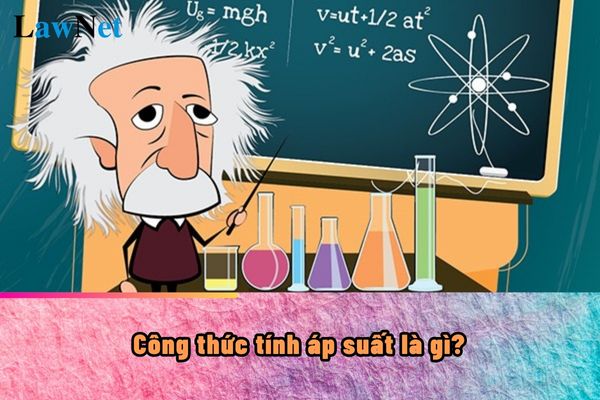What is the formula for calculating pressure? Will it be taught in grade 8 in Vietnam?
What is the formula for calculating pressure?
Pressure is a physical quantity that represents the force acting perpendicularly on a unit area.
Pressure indicates the degree of concentration of force on a surface.
|
Pressure Calculation Formula *In which: |
*Note: The information is for reference only./.

What is the formula for calculating pressure? Will it be taught in grade 8 in Vietnam? (Image from Internet)
Will formula for calculating pressure be taught in grade 8 in Vietnam?
First, according to the characteristics of the Natural Science subject, which includes grade 8 Physics.
According to Section I of the Appendix to the Natural Science Curriculum, promulgated by Circular 32/2018/TT-BGDDT:
I. CHARACTERISTICS OF THE SUBJECT
In the general education curriculum, Natural Science is a compulsory subject taught in secondary schools, helping students develop qualities and competencies that have been formed and developed at the primary level; complete foundational knowledge and skills, and study methods to continue learning in high schools, vocational schools, or participate in labor life.
Natural Science is built and developed on the foundation of physical sciences, chemistry, biology, and Earth sciences. The research subjects of Natural Science are natural objects, phenomena, processes, and the basic properties concerning the existence and movement of the natural world. In the Natural Science Curriculum, educational content about the most general principles and concepts of the natural world is integrated according to natural principles while ensuring the internal logic of each content stream.
...
Additionally, based on Section IV of the Appendix to the Natural Science Curriculum, promulgated by Circular 32/2018/TT-BGDDT, specific requirements to achieve are as follows:
Density and Pressure
- Concept of density
- Measuring density
- Pressure on a surface
- Increasing and decreasing pressure
- Pressure in liquids, in gases
The following lessons will be covered:
- State the definition of density, determine density through corresponding mass and volume, density = mass/volume.
- List some commonly used density units.
- Conduct experiments to determine the density of a rectangular block, an object of any shape, or a volume of liquid.
- Conduct experiments to survey the effect of a liquid on an object placed in it, deducing: Qualitative conditions of floating and sinking objects; Archimedes' law.
- Use practical tools to confirm: pressure is produced when there is a force acting on a surface area; pressure = force/area.
- List some common units of pressure.
- Discuss the utility of increasing and decreasing pressure through some real-world phenomena.
- State: Pressure exerted on a liquid is transmitted undiminished in every direction by the liquid; provide illustrative examples.
- Conduct experiments to demonstrate the existence of atmospheric pressure and that this pressure acts in all directions.
- Describe the formation of noise in the ears when subject to sudden pressure changes.
- Explain some applications of air pressure in daily life (e.g., suction cups, spray bottles, hovercraft).
Thus,formula for calculating pressure is taught in grade 8 in Vietnam
What are the forms of assessment and evaluation for the Natural Science subject in Vietnam?
According to Section VII of the Appendix to the Natural Science Curriculum, promulgated by Circular 32/2018/TT-BGDDT, the forms of assessment and evaluation for the Natural Science subject are stipulated as follows:
The Natural Science subject uses the following assessment forms:
- Evaluation through written assignments: essays, objective tests, essays, reports, ...
- Evaluation through oral responses: question responses, interviews, presentations,...
- Evaluation through observation: observing students' attitudes and activities during practical experiments, group discussions, field studies, tours of scientific establishments, production facilities, implementing projects that apply knowledge to practical situations, using tools such as observation sheets, checklists, learning portfolios,...
>>> Download the Natural Science Curriculum, promulgated by Circular 32/2018/TT-BGDDT.

